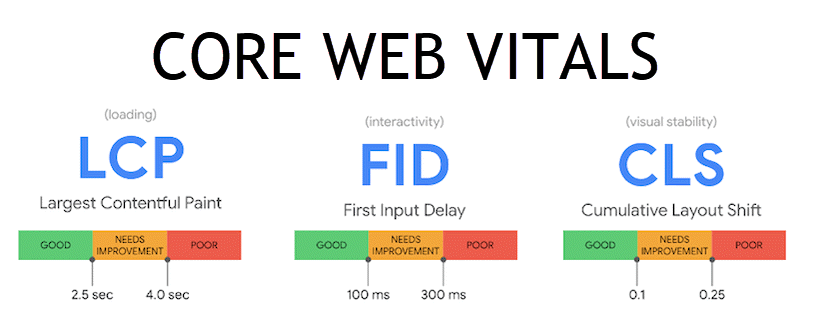Welcome to the digital crossroads of UX and SEO. User Experience (UX) and Search Engine Optimization (SEO) intersect in several ways. It is crucial to understand this aspect, especially if you are starting your SEO journey.
This guide is for content writers, marketers, web admins, and entrepreneurs. It is for those who want to learn how SEO and UX can together improve a website’s performance. I will discuss the UX best practices that make a website SEO-friendly.
I will also walk you through implementing UX strategies for SEO. By the end of this blog, you’ll know how to use them to make your website more engaging and visible online.
I’ve been in the Tech industry for over two decades now. I have seen the Internet, Cloud, Mobile, and Big Data impacting our daily lives. In my opinion, AI in SEO falls into the same league. A Microsoft survey concluded that 70% of their Generative AI users were more productive. I will share my years of experience on the impact of UX and SEO.
Let’s dive in!
1. What Is User Experience (UX)?
User Experience (UX) is how a person feels while interacting with a website. It covers all aspects of the end-user’s interaction with the organization’s touch point, like the website.
The goal is not just to make a website functional. It should also be enjoyable and efficient for the user. Good UX design ensures that your website visitors find what they need quickly. This kind of design leads to higher satisfaction and increased engagement.

Consider Google.com, a good example of UX excellence. Google’s interface is simple. But behind its clean, uncluttered search bar lies a powerful, user-centered design philosophy. There should be ease in finding information with just a few clicks. It shows a seamless integration of form and function.
They are focused on delivering an intuitive and fast user-experience. This focus has made Google the go-to search engine for billions. Adding features like voice search demonstrates a commitment to this philosophy.
UX isn’t just about making things look pretty. It’s about creating a website that anticipates the user’s needs. The users should be able to find what they want effortlessly.
An example is an e-commerce portal suggesting products based on past browsing history. Another is a news website that adjusts its layout for optimal reading on any device. These showcase UX principles in action.
Websites should provide a user experience that feels personalized and effortless. It encourages your online visitors to stay longer and engage with the content.
2. How Does UX Impact SEO?
Enhancing UX often leads to improvements in SEO. It highlights the importance of considering UX as an integral part of your SEO strategy.
Below are factors illustrating the intertwined relationship between UX and SEO.
- Enhanced User Engagement: Websites with good UX design often see higher engagement rates. Users spend longer time on your pages and have lower bounce rates. Search engines interpret this behavior as a positive indicator of a site’s value. This assessment can boost its rankings.
- Improved Site Usability: UX focuses on making websites easy to navigate. A well-structured website allows users to find information quickly. Search engines like Google favor this kind of structured website. It serves their aim to provide the best possible results to users’ queries.
- Mobile Optimization: With the increased use of mobile devices, having a mobile-friendly website is crucial. Good UX includes designing for mobile users. These designs align with search engines’ preference for mobile-optimized sites in their rankings.
- Faster Page Speed: A core aspect of UX is optimizing page speed to ensure users don’t have to wait. Fast websites are ranked higher by search because they provide a better experience.
- Quality Content: UX and quality content go hand in hand. Content must be easy to read, informative, and engaging. This kind of content contributes to a good user experience. Search engines favor sites that provide valuable content to users.
- Lower Bounce Rates: A direct correlation exists between UX and bounce rates. Websites that are easy to use and meet users’ expectations tend to have lower bounce rates. Search engines like Google consider bounce rate as a ranking signal. Low bounce rates indicate relevant and helpful content.
- High Conversion Rates: UX improvements can lead to higher conversion rates. It may be signing up for a newsletter or making a purchase. Search engines value sites that fulfill users’ needs and intents. Hence, this positive user behavior can indirectly influence SEO.
- Enhanced Accessibility: Incorporating accessibility features improves UX for people with disabilities and benefits SEO—search engines like websites that are accessible to a wider audience.
- Increased Social Shares: Websites with excellent UX are more likely to be shared on social media. These social signals can positively affect a website’s search engine ranking.

I recommend reviewing the Google’s Page Experience documentation for detailed insights and guidelines. This resource provides comprehensive information on optimizing websites for a better user experience. You can know specifics of what aligns with Google’s search ranking criteria.
3. UX Best Practices For SEO
Focusing on these UX best practices is helpful. It can improve your website’s SEO performance by making it more user-friendly. Here are the UX best practices for SEO.
- Focus on Page Speed: Optimize images, reduce code, and leverage browser caching. These are some of the techniques to enable your site to load quickly. Fast-loading pages minimize bounce rates and are ranked higher by search-engines.
- Clear Messaging & Takeaways: Use straightforward and concise language to communicate your key messages. Clear messaging helps users and search-engines understand your site’s purpose.
- Easy Navigation: Structure your site with intuitive navigation to help users find information quickly. A well-organized site enhances user satisfaction and is favored by search-engines.
- Branding Consistency: Ensure your website’s design and content aligns with your brand identity across all pages. Consistent branding improves user trust and engagement, positively impacting SEO.
- Design for Mobile Devices: Create a responsive or mobile-friendly website design. Mobile searches are on the rise. Over 60% of the online traffic is from Mobile devices. Search-engines prefer websites that provide an excellent mobile user experience.
4. Implementing UX For SEO
UX for SEO is a multifaceted approach. It requires attention to various aspects of your website’s design and functionality. You can create a satisfactory user experience and boost rankings by implementing these.

1. Site Architecture
Implementing an effective site architecture is crucial. It can create a user-friendly website and enhance SEO. Good site architecture makes it easier for users to navigate your website. They can find the information they need without confusion.
This process involves organizing your site’s content in a logical hierarchy. Clearly label categories and ensure that the most important information is easily accessible. A well-planned site architecture uses a consistent navigation scheme. So, it should remain the same across all pages.
It minimizes user effort to move around the site. Breadth-first navigation is a concept where users are presented with broad categories. These then lead to more specific subcategories. This way of organizing is effective in helping users find what they need quickly.
From an SEO perspective, a clear and logical site architecture aids search-engines. They can efficiently index & crawl your website. They can also understand the relationship between pages and the content theme. This way, you can enhance your site’s visibility in search engine results pages (SERPs).
Implementing breadcrumb navigation and a sitemap also helps. It is easier for search-engines to navigate your site. Users too, can understand where they are within the structure of your site.
In summary, a thoughtful site architecture is a foundational element of both UX and SEO. Make information architecture a priority from the start. You can then ensure a smooth user experience and strengthen your SEO efforts. These steps lead to better performance in SERPs.
2. Core Web Vitals & Speed
Core Web Vitals and page speed optimization are basic elements for improving SEO. Core Web Vitals are a bunch of metrics introduced by Google. They measure the speed, responsiveness, and visual stability of a webpage.

These include:
- Largest Contentful Paint (LCP), which tracks loading performance.
- First Input Delay (FID), which measures interactivity. FID is now being replaced by Interaction to Next Paint (INP). INP gauges the responsiveness of a webpage.
- Cumulative Layout Shift (CLS), which gauges visual stability.
Optimizing these aspects ensures that users enjoy a smooth and fast browsing experience. These are crucial for retaining visitors and encouraging engagement on your site.
Web developers have various options to enhance Core Web Vitals and speed. This includes actions like:
- Optimizing and compressing images and videos to reduce load times.
- Minifying CSS, JavaScript, and HTML to decrease file sizes.
- Leverage browser caching to store resources locally on users’ devices.
You may need a reliable web hosting service and use a content delivery network (CDN). They improve page loading times by reducing the physical distance between the server and the user.
These improvements directly contribute to better SEO. It aligns with the search engines’ commitment to prioritizing user experience.
Google, for instance, has made Core Web Vitals a ranking factor. This means that websites that perform well on these metrics are very likely to rank better in SERPs.
Websites can enhance user satisfaction by focusing on Core Web Vitals and speed. They also gain a competitive edge in search-engine rankings.
3. Responsive Web Pages
Implementing responsive web pages is a crucial aspect of modern web design. The focus is on creating a consistent and seamless user experience across a range of devices. They could be desktops, tablets, or smartphones.
This approach uses flexible layouts, images, and dynamic cascading style sheets (CSS). It ensures that content adjusts to the user’s device. They may vary by screen size, orientation, and resolution. By prioritizing responsiveness, websites can offer intuitive navigation and readability.
The user does not have to zoom, scroll horizontally, or resize the page manually. This level of adaptability enhances user satisfaction and significantly reduces bounce rates. Users are highly likely to engage with navigable content regardless of their device.
From an SEO perspective, responsive design contributes to better rankings in search engines. Google encourages mobile-friendly websites in its SERPs. You consolidate your content under one URL by having a single, responsive site. This option makes it easier for search engines to crawl and index your site’s content.
Additionally, responsive design helps in reducing page load time. This loading time is a critical factor that search engines consider when ranking websites. Faster loading times improve overall site performance. It helps to boost visibility and ranking in search results.
Thus, responsive webpages are essential to enhance a site’s SEO performance.
4. UI Design & Layout
Implementing “UI Design & Layout” for better UX is strategic. It is a blend of aesthetics, functionality, and usability. Such an implementation contributes positively to SEO outcomes.

At the heart of impactful UI design is the principle of simplicity and intuitiveness. A clean, well-organized interface aligns with the users’ expectations. It facilitates smooth navigation and interaction, leading to a satisfying user experience.
This approach reduces bounce rates and increases the time spent on the site. These are two key metrics that search engines consider when ranking websites. The layout should guide users naturally through the content. Calls-to-action (CTAs) should be strategically placed to draw attention. But they shouldn’t overwhelm or confuse the user.
Ensure that the UI design is responsive across all devices. This requirement is non-negotiable in today’s mobile-first world. A responsive design adapts to various factors. It includes screen sizes and orientations for a seamless experience. Whether the user is on a smartphone, tablet, or desktop, the experience should be the same.
You should incorporate accessibility features into the UI design. There are enough contrast ratios, alt text for images, and keyboard navigability. These make your site more inclusive and improve its SEO.
In summary, a thoughtful UI design and layout are pivotal. They create an engaging and accessible user experience. Focus on user needs and expectations. You must ensure consistency and responsiveness across all platforms. Your website can then achieve higher search rankings and drive conversions.
5. Conclusion – UX For SEO
It’s time to wrap up this discussion on the relationship between UX and SEO. Clearly, the two are interconnected and essential to creating high-performing websites.
Here are the key takeaways from our discussion:
- The Essence of UX: UX ensures users have a positive, seamless interaction with your website. It’s not just about aesthetics. It is creating intuitive and engaging experiences to meet users’ needs and expectations.
- Impact on SEO: Good UX practices significantly impact SEO. They enhance the site’s usability, increase engagement, page speed, and are mobile-friendly. These factors contribute to higher search rankings and visibility.
- Best Practices for UX in SEO: Implementing UX best practices leads to a boost in user satisfaction and rankings. In this blog, I have covered several aspects. They include prioritizing page speed, simplifying navigation, optimizing for mobile devices, etc.
- Implementing UX for SEO: We discussed optimizing site architecture and focusing on Core Web Vitals. They will ensure responsive web design and emphasize UI design & layout. Each of these areas plays a critical role in marrying UX with SEO.
- Strategic Integration: Successfully integrating UX with SEO strategies requires a thoughtful approach. It centers around the user’s needs while also catering to search engine requirements. This balance is critical for driving organic traffic and enhancing user engagement.
In conclusion, the marriage of UX with SEO is beneficial and necessary for the success of any website. The focus is on creating a user-centric design and optimizing it for search engines. By doing this, you ensure a robust online presence. It not only attracts users but also engages and retains them.
I would love to know which aspect of UX design worked well for your SEO.




